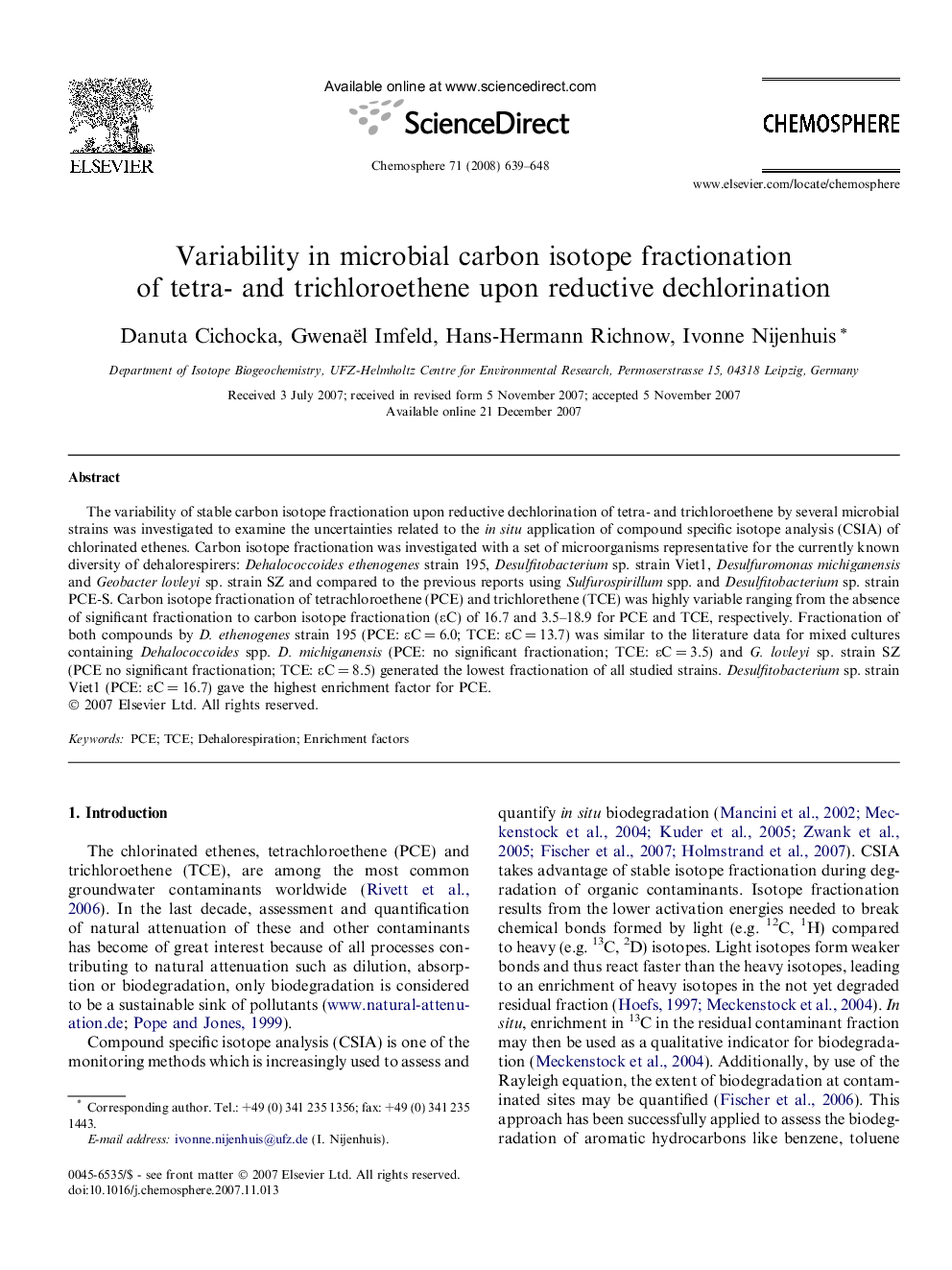| Article ID | Journal | Published Year | Pages | File Type |
|---|---|---|---|---|
| 4413896 | Chemosphere | 2008 | 10 Pages |
The variability of stable carbon isotope fractionation upon reductive dechlorination of tetra- and trichloroethene by several microbial strains was investigated to examine the uncertainties related to the in situ application of compound specific isotope analysis (CSIA) of chlorinated ethenes. Carbon isotope fractionation was investigated with a set of microorganisms representative for the currently known diversity of dehalorespirers: Dehalococcoides ethenogenes strain 195, Desulfitobacterium sp. strain Viet1, Desulfuromonas michiganensis and Geobacter lovleyi sp. strain SZ and compared to the previous reports using Sulfurospirillum spp. and Desulfitobacterium sp. strain PCE-S. Carbon isotope fractionation of tetrachloroethene (PCE) and trichlorethene (TCE) was highly variable ranging from the absence of significant fractionation to carbon isotope fractionation (εC) of 16.7 and 3.5–18.9 for PCE and TCE, respectively. Fractionation of both compounds by D. ethenogenes strain 195 (PCE: εC = 6.0; TCE: εC = 13.7) was similar to the literature data for mixed cultures containing Dehalococcoides spp. D. michiganensis (PCE: no significant fractionation; TCE: εC = 3.5) and G. lovleyi sp. strain SZ (PCE no significant fractionation; TCE: εC = 8.5) generated the lowest fractionation of all studied strains. Desulfitobacterium sp. strain Viet1 (PCE: εC = 16.7) gave the highest enrichment factor for PCE.
